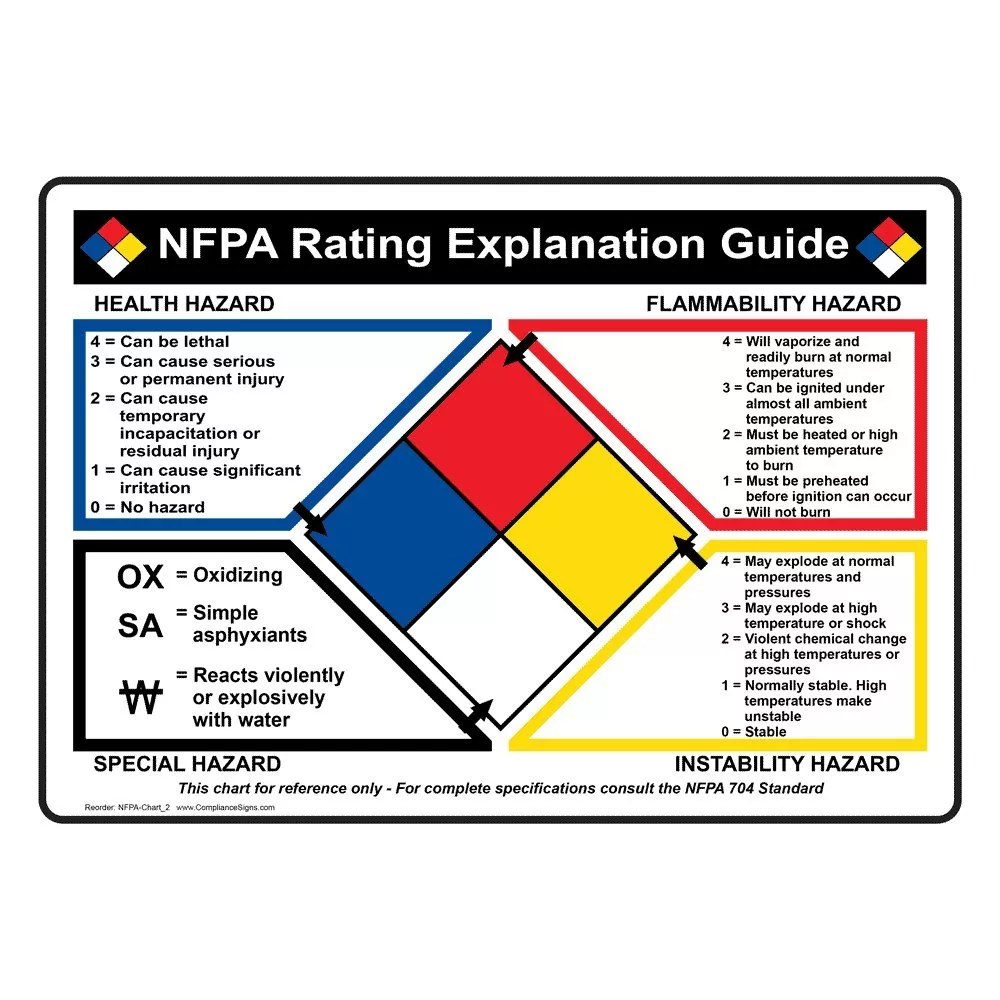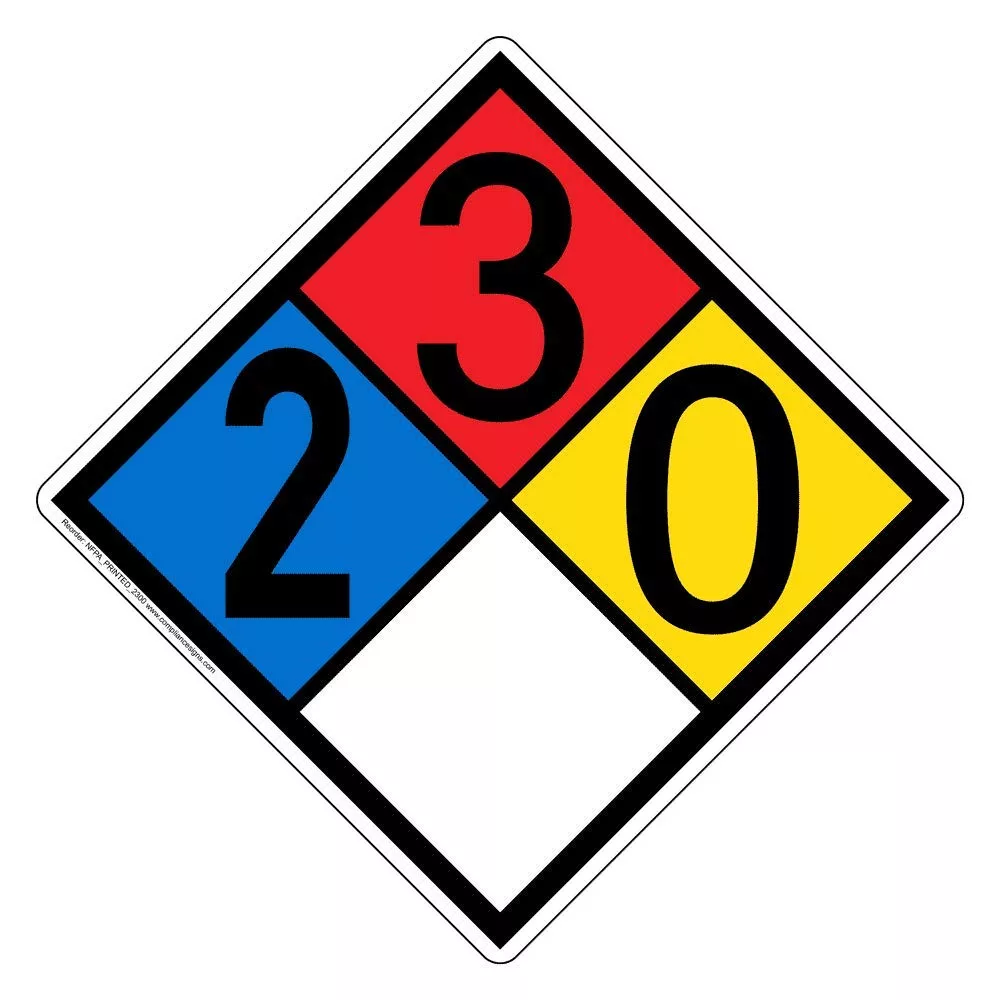While the marketing of your distillery may involve keywords like “craft”, “flavor”, and “locally made”…in the eyes of the law, and primarily fire prevention authorities, the word distillery translates more toward “flammable liquids factory”. So, as one can imagine, there are many rules that come along with this, and some of those rules involve signage to help make these types of facilities as safe as possible. Below, you’ll find what signs are required, why they’re required, and where they are supposed to be placed.
Some of these signs are easily accessible for purchase via the link below:
NFPA 704 “Hazmat Sign”
This sign is a national standard for showing the hazards that exist within a building. It is posted for fire departments to be notified of the hazards that exist on site when responding to an emergency or fire. NFPA 704 requires this sign for distilleries. It should be posted at the outside of exterior doorways in any room or building that is manufacturing or storing alcohol. The below diagram explain the sign and the different numbers and colors:

The numbers for alcohol are : Blue- 2, Red-3, and Yellow- 0

No Smoking Sign
The reason for this sign is pretty self explanatory. It should also be posted outside of any room , area, or building containing considerable amounts of alcohol.
EPO Sign
You’ll need this sign if you have an EPO (Emergency power off) for either ventilation, boiler, or both. These would be required if you exceed the MAQ’s and have an H-3 occupancy. The EPO signs would be required at the EPO button locations located at the exits of the hazardous area or outside the boiler room. Where doors exit directly to outside, the buttons and signs can be placed just inside.
Exit Signs
Exit signs are required in any room or area requiring more than one exit. They are often required for distilleries, but not always. H3 occupancies will always have exit signs.
Check back in with out blog soon….I am thinking we will soon do another article elaborating all about exit signs!
Door Locking Signs
In certain instances, small tasting rooms for instance, you may be permitted to have a dead-bolted door for your main entrance/ egress, as opposed to a door with push / panic hardware that can always be opened from inside. In the case of a door with a deadbolt, the door is required to have signage over it reading ” door to remain unlocked during business hours.” This ensures that people can’t be locked inside a space. In H3 occupancies, this is never permitted and you must always have panic hardware.
Check back in with out blog soon….I am thinking we will soon do another article elaborating all about exit signs!
Accessibility Signage
This one also could have its whole own entire article. But, as a general overview, signs at the doors into accessible bathrooms are required, showing the standard wheelchair icon. There will sometimes be accessible signage for accessible entrances required if more than 1 entrance is provided. Please reference ADA guidelines and ANSI 117.1 for more information.